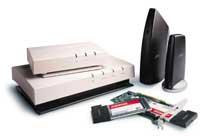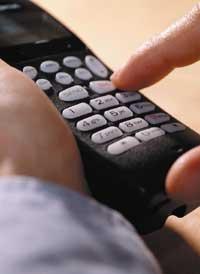Wave networks
2003/01/31 Roa Zubia, Guillermo - Elhuyar Zientzia
Fast or slow, large or small, high or low memory, nowadays the computer without connecting is not modern. In recent years, the world of computing has become the slave of the Internet. Therefore, the speed of connection to the network is the technological god of today and the prestigious ADSL his prophet. Due to the great attention it receives, the connection speed is increasing progressively in all places and soon it will not be a technological problem. This means that soon we will not be able to charge more for having the privilege of speed. That is called democratization. Speed is democratized and therefore other features such as the absence of cables will come into force.
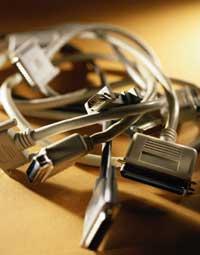
The success of wireless phones has been overshadowed by the mobile revolution. People are not enough with wireless devices, they take them anywhere and ask for the technology that can be used. Computers and phones that can be used in bus, butcher and bathroom are sold almost without restrictions. And not only that: the companies that sell want to make us believe that what we bought a year ago has become obsolete.
Curiously, the philosophy that this technology brings has been fully accepted without analyzing its consequences. Without just knowing the news, we cannot live. And talking to the person we will see in two minutes is essential: "Where are you? On the bus? I at the traffic light on the corner. Now it’s red… wait… now green. I'm leaving. So far."
The laptop allows us to work anywhere. It is no longer necessary to go to the office, we can also write at breakfast the report issued by the Head of Department and in this way, instead of writing a single report a week, we will draft three reports, of course, for the benefit of the company. Amazing.
This crazy lifestyle conditions (and can limit) the development of domestic technology. For example, the research line to reduce the size of mobile phones is a priority issue in telecommunications companies. In addition, they want to turn phones into computers and computers into mobile devices.
Broken links
In the same way, other wireless devices are being democratized. The scope of computers is a good example. Do you still use in the office a great gadget full of cables? Don't you know there are free keyboards? And mice? The tail of the mouse is about to disappear.
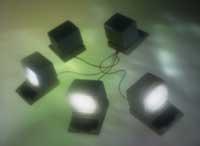
From a technological point of view this has some consequences: copper cables are used much less in new computers. But, then, how do the keyboard and mouse communicate with the computer core? Through the waves, of course: as the television command does. We are filling the house with waves. We do not know whether or not they affect our health, but because of the difficulty of demonstrating, they have no strength to question technological production.
They also aim to expand mobility in computer networks. What does that mean? We talk about wireless networks.
The truth is that in companies computers are organized in local networks, that is, in structures called LAN (from the English Local Area Network). People working in the offices know very well what type of cable mixing they need in this LAN. Totally neat, it looks like a chaotic installation.
In order not to have to install this mess, some have thought to take advantage of the philosophy without cables. It is not a bad idea. These networks replace cables with antennas and receivers. This invention is called WLAN, that is, from the English Wireless Local Area Network. The only problem is the waves, to which there are so many computers in the office you have to add those that the local network needs. Therefore, a huge magnetic field is created around workers. But since the health problems generated by waves are not proven, we will have to take the idea for good.
From a technological point of view, the limits of the WLAN are security and, above all, speed. They are not very fast and there have been problems with information encryption. However, these problems will be resolved over time.
Urban network
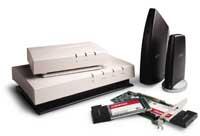
In relation to WLAN networks there is an interesting idea: that of the wireless community. The wireless community is a large wireless network organized throughout a city. This local network is not normal, it is a way to connect to the Internet. This network consists of nodes voluntarily installed by the user, so that the owners of these nodes offer a wireless Internet connection, without therefore requesting money.
The project is underway or is underway in several cities. In Euskal Herria, for example, projects have been carried out in Pamplona, Vitoria and Bilbao.
But do we need those networks? Connecting to the Internet from anywhere is a resource. But do we need that resource? It seems that the idea of wireless communities is an alternative to crazy consumption. How long will this alternative last without absorbing the economic market?
WLAN standards In June 1997, the IEEE approved 802.11, which sets computer standards. This standard specifies the characteristics of wireless communication. This communication was located in the 2.4 GHz band. WLAN networks are performed according to 802.11b standards, as they are broadcast at that frequency with a speed of 11 Mbps. Compared to the ADSL line, therefore, it is a very slow connection, so you should look for a way to speed up that speed to get more availability. When talking about WLAN you also need to mention the security issues. WLAN networks use an encryption system called WEP (Wired Equivalent Privacy), equivalent to that supposedly offered by wired networks. However, this system at first was not difficult to decode; when some experts discovered the decoding method, a great crisis arose. In addition to encryption systems, authentication methods were incorporated to improve the WEP. |
Garbage by email These emails are known to computer users as spam. Users have often received information, advertising and other issues that we have not requested through email. Pornographic websites, commercial by ordinary mail and email, and other spamers use this way to advertise. But how do they demonize our leadership? There are several ways to get a list of addresses. However, the traditional mode is the medium of messages that travel over the network. Sometimes they send happiness or sex, but other times they are also messages with an altruistic goal. The United Nations recently prepared a brief aimed at avoiding the alleged third world war and spread the message that asked us to sign through the Internet. It was not true. The United Nations did not. These messages provide an address so that if you don't want to receive more, your name will be removed from the lists. It is a fraud. In this direction they only confirm that your address is correct. Therefore, you can send that address a response that mimics an error message. In this way, those who send this spam will think that their address is not correct and, in order not to receive the error in each send of the message, they must delete it from the list. On the other hand, some of the portals that offer e-mail address separate spam when receiving it, allowing the user to discard it directly, since all spam is automatically transferred to a folder. |
Posted in Zabalik.

Gai honi buruzko eduki gehiago
Elhuyarrek garatutako teknologia



